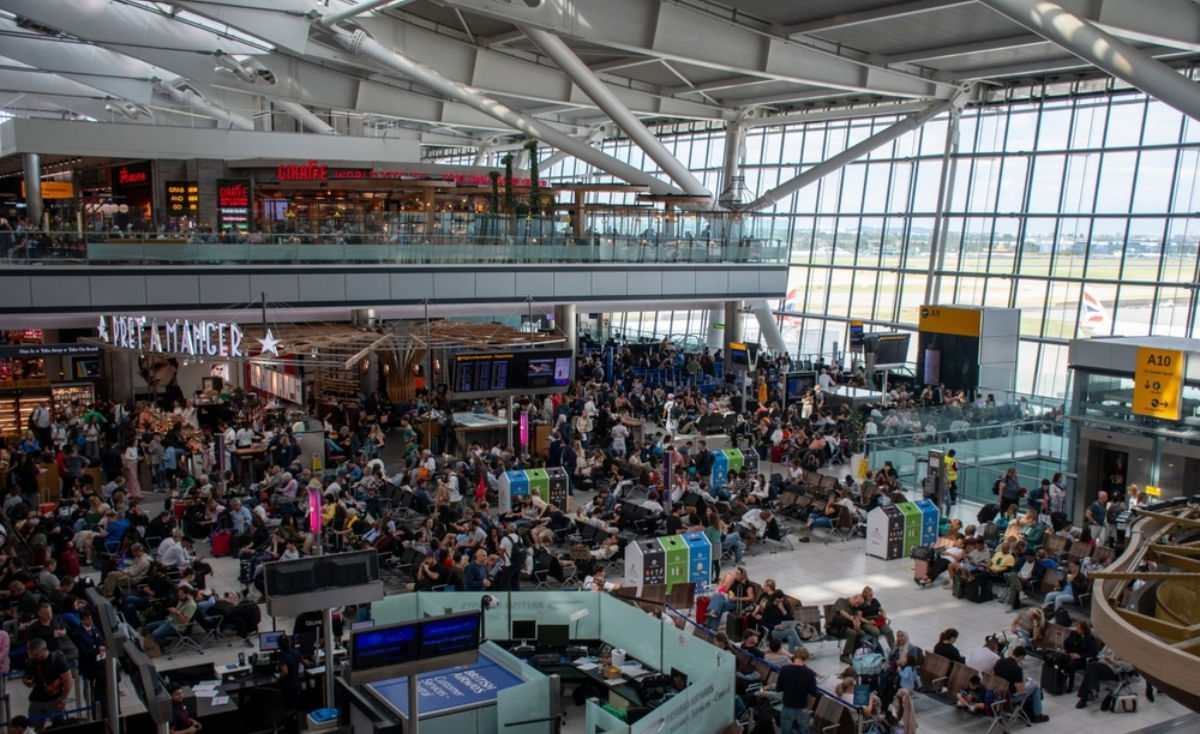Bussiness
Markets ‘remain on tenterhooks’ – London Business News | Londonlovesbusiness.com

Digest – Markets continued to closely monitor geopolitical news flow yesterday, though sentiment was somewhat steadier. A busy data docket awaits today, ahead of the September US jobs report tomorrow.
Where We Stand – Participants remained on tenterhooks yesterday, focusing almost squarely on incoming geopolitical news flow, as attention remains on the potential for an Israeli response to Tuesday’s missile barrage launched from Iran.
Equities, evidencing this, closed flat on Wall Street yesterday.
As of yet, such a response has yet to come to fruition, though the majority of participants would say that such a retaliatory attack is likely still a question of ‘when’ rather than ‘if’.
Of course, the primary concern for markets continues to centre around whether said response will include attacks on Iranian oil infrastructure, as well as whether a further escalation in tensions will see other regional players drawn into a wider conflict.
Naturally, crude continues to price an elevated level of geopolitical risk premium, with both Brent and WTI having notched a fourth straight daily advance yesterday. Both Brent and WTI settled in the green, albeit well off intraday highs, with WTI’s $72.50bbl peak equalling its best level in a fortnight, before the move pared.
For the time being, extremely elevated geopolitical tensions are likely to keep a floor under prices. However, the demand side of the equation remains particularly shaky, most obviously due to ongoing downside economic risks emanating from China. Hence, a repeat of the recent ‘buy the rumour, sell the fact’ reaction to incoming geopolitical news flow can’t be ruled out. Short crude right here would be akin to picking up pennies in front of a steamroller, though my medium-term bias is still a bearish one.
The greenback was also underpinned by lingering geopolitical risk yesterday, with the dollar index (DXY) rising to a 3-week high. Once again, I still favour fading USD rallies, given the Fed’s relative rush back towards neutral, but am happy to sit on my hands for now, until geopolitical risk subsides. Unsurprisingly, the market isn’t especially bothered about 25bp or 50bp here or there, when the threat of all-out conflict in the Middle East continues to ratchet higher.
That said, yesterday’s ADP employment figure – +143k vs. +125k exp. – did result in a modest hawkish repricing of policy expectations. The USD OIS curve now sees just a 29% chance of a 50bp cut at the November meeting, the most hawkish that pricing has been since the ‘jumbo’ cut delivered in mid-September.
This hyper-sensitivity of market pricing to incoming releases seems to be here to stay, even if the correlation between the ADP and NFP prints has deteriorated to be statistically insignificant at this stage. The blame for this increased vol in market pricing lies squarely with policymakers who, by virtue of the chaotic guidance given prior to the prior policy decision, have given markets little by way of a steer on the pace of future rate moves.
My own view, for what it’s worth, remains that the FOMC will cut at a 25bp clip every meeting, with larger 50bp cuts on the table if/when unemployment rises beyond the 4.4% median 2024 and 2025 SEP forecast.
Sticking with monetary policy, it appears that new Japanese PM Ishiba has taken a leaf out of the books of Turkish President Erdogan and Brazilian President Lula. Ishiba noted yesterday, after a meeting with BoJ Governor Ueda, that Japan is not at this stage in an environment to raise rates again, and that he expects monetary easing “to stay in place”. One wonders what Ueda thinks of this, with the new PM veering into questioning the BoJ’s independence just a couple of days into his new job.
In any case, the market took a rather dim view of things, as the JPY sunk to the bottom of the G10 leaderboard, with USD/JPY rising north of the 146 figure, and above its 50-day moving average for the first time since mid-July, while the OIS curve now discounts just 5bp of hikes before the end of the year.
This pricing does feel a little too dovish now, particularly if the BoJ maintain their existing outlook at the October meeting, paving the way for another hike at the following confab in December. If that pans out, a reversal in the JPY’s fortunes could also be on the cards, though again that’s a theme for when current Middle East tensions dissipate.
For Treasuries, though, it appears that the market has already made up its mind, and has moved past those tensions for now. Across the curve, from 2-30 years, yields now all sitting north of the levels seen prior to Tuesday’s Iranian attack; benchmark 10-year yields rose over 5bp yesterday, topping 3.80% intraday, while the curve resumed its recent bear steepening, perhaps an indication that the better-than-expected ADP print has sparked a resurgence in concerns over the Fed easing too much, too soon.
Look Ahead – A busier data docket awaits today, as we continue to inch towards Friday’s all-important US labour market report.
Highlighting proceedings will be this afternoon’s US ISM services PMI report, with the index expected to have ticked higher to 51.7 last month, from 51.5 previously – a print in line with consensus would be the index’s highest level since May. Of course, participants will pay close attention to the employment sub-index, previously 50.2, for any read-across to the aforementioned jobs report.
Elsewhere, today, in the US, factory orders are expected to have risen by a modest 0.1% in August, while the weekly jobless claims figures are also due, though do not coincide with the survey week for the September jobs report.
Closer to home, final reads on the September eurozone and UK services PMIs are due, though both metrics are almost certain to be unrevised from the ‘flash’ estimates, at 50.5 and 52.8 respectively.










